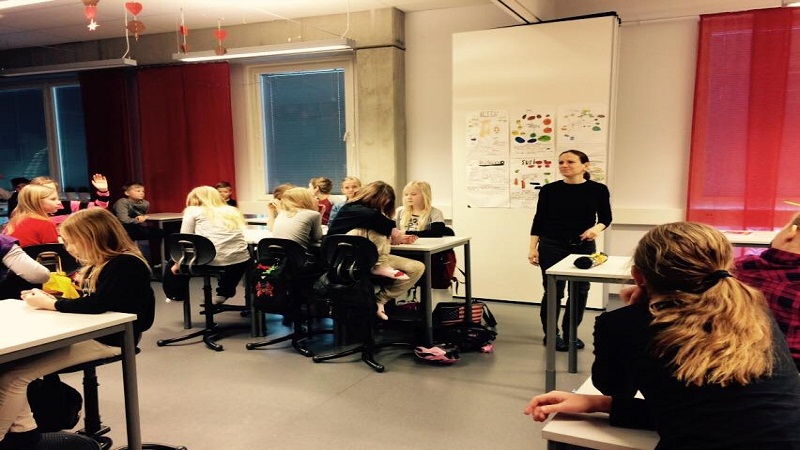Do you want to know how to detect dyslexia in children from 3 to 12 years old ? We are talking about a type of disorder related to learning that is found in children who do not have. Or do not show any physical, psychological or social problems. It is understood as a conflict when decoding or reading words.
Dyslexics often manifest difficulties in reciting the alphabet, to classify sounds, name letters or make simple rhymes. Regarding reading, they are faced with slowness. Difficulty in visual monitoring, compression deficit, investments, distortions and substitutions.
Apart from the condition itself. The children with dyslexia are also facing an educational system that is not adapted to their situation. Because they can not absorb certain content. On the other hand, this disorder is sometimes confused with a clear lack of interest in the studies. And, instead of helping with the problem. A pressure is exerted on the child to make a greater effort.
Keys to detect dyslexia

It is key to detect dyslexia and, although the profile is varied, concrete symptoms that give the alarm are externalized.
Symptoms of dyslexia in children of children’s cycle (from 3 to 5 years old)
In this stage we must observe a series of signs that we detail next:
- Late language assimilation
- Low oral comprehension
- Poor vocabulary
- Slowness in oral expression
- Confusion between words whose phonetics are similar
- Problems with coordination and balance
- Reduced short-term memory capacity
- A manual ability superior to linguistics
- Extensive creativity and curiosity
- Problems to recognize your name or write it
- Difficulty to assimilate basic concepts
- Difficulty memorizing simple songs and rhymes
- Conflict when learning to use the clock or mathematical operations
- Problems to learn sequences.
- Tendency to use the pencil incorrectly
- Motor problems, when it comes to dressing and tying shoelaces and buttons
Symptoms of dyslexia in primary school children (6 to 12 years old)
- They continue to have a poor vocabulary and difficulty in speaking
- Lack of concentration
- Low performance in the linguistic subjects
- Confusions with numbers and difficulty learning multiplication and dividing tables
- Difficulty in learning to read
- Problems to carry out sequences in the opposite direction
- Slow and irregular writing
- Low reading compression
- Omission of words during reading
- Problems with the accentuation of words
- They find obstacles to orally expose knowledge
- Disorganization
- Disinterest in the studies
- Absence of trust
- Difficulty in learning foreign languages
- Occasionally, behavioral problems are generated due to the demotivate and frustration that they face
Symptoms of dyslexia in children 12 years and older

- Inability to be precise before oral presentations
- Low self-esteem is maintained and disinterest increases
- Sometimes writing phobia develops before the pressures to which they have been subjected
- The learning of foreign languages remains a problem
- Mechanical reading and hesitant
- Low reading compression
- Spelling problems
- Difficulty organizing and writing texts
- Alterations in the syntactic structure
- Learning through written language is a difficulty
Did you know these symptoms to detect dyslexia in children from 3 to 12 years old. And from this age group inwards?
What are the types of dyslexia?

There are several types of dyslexia. Within the educational field we speak of developmental dyslexia. Or evolutionary dyslexia (there is no cause or injury that explains it); because acquired dyslexia; is that caused by an injury that involves the area of literary processing. Both evolutionary and acquired dyslexia. 3 types of classifications can be observed according to the patient’s symptoms. Which allow you to know how to detect dyslexia.
Phonological or indirect dyslexia: It is difficult to read long and infrequent words. The individual can read familiar words. But has trouble reading unknown words or pseudo words. They make visual and morphological errors; especially with the suffixes.
The patient performs a visual reading of the words or tries to deduce it rather than reading it. They confuse the suffixes, example: eating / eating.
- Superficial dyslexia: It is the most common in children. They are problems when it comes to reading irregular words (other languages, especially English). That is why it affects those who speak English. Since it is a language in which, in many cases, the words do not correspond to a certain pronunciation. That is; that the form in which it is written does not necessarily correspond to its pronunciation.
- Dyslexia mixed or deep: Only occurs in cases of developmental dyslexia. They make semantic errors; with numerous visual and derivative errors at the time of reading. Example: confuse happy with Christmas
What is the treatment of appendicitis?

It is always surgical and appendectomy is practiced (surgically removing the cecal appendix) patronymically or openly and Laparoscopic ally. Or by minimal access surgery; which is currently the most used throughout the world.
After every operation it is necessary to use intravenous antibiotics with the patients. The most frequently used include phosphorescence, triglycerides and metropolitan. In different treatment schemes, according to the degree of complication found in the trans operative period. Depending on the antimicrobial scheme of each medical institution and according to the medical protocols of treatment of each place. Hospital institution and country. This will allow the patient a quick recovery from appendicitis.







